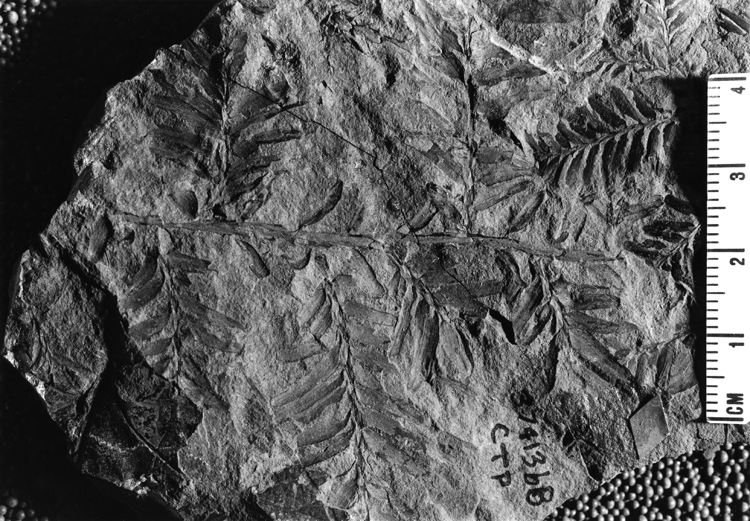Locality
From Hollick (1930) (p. 55-56)
"Chignik Bay, about 2 miles northeast of Alaska Packers Association cannery, Alaska Peninsula (original No. 958); collected by T. W. Stanton in 1904 (lot 3521)(pl. 19, figs. 4, 5; pl. 29, fig. 1b). Port Moller, 2 miles up the canyon west from Mud Bay, Alaska Peninsula (original No. 35); collected by W. W. Atwood and H. M. Eakin in 1908 (lot 5187) (pl. 19, fig. 6a)."
Description
From Hollick (1930) (p. 55-56)
"Plate 19, Figures 4-6a; Plate 29, Figure 1b"
"Leafy twigs subtending almost right angles of divergence with the supporting branches; leaves apparently short petioled, linear or obscurely linear-lanceolate, subtending obtuse angles with the supporting twigs."
Remarks
From Hollick (1930) (p. 55-56)
"These specimens are designated as representing a new specific type in the genus Tumion (Torreya), although it appears to be probable that they may represent a form of some one or another of certain previously described species. They are rather poorly preserved, and details of form and method of attachment of the leaves are obscurely defined, so that even the generic appellation may be erroneous. The general shape of the leaves is somewhat suggestive of Taxodium? sp. Knowlton (1917) (p. 252, pl. 32, figs. 1, 2) from the Vermejo formation of northeastern New Mexico, but the angles of divergence of these leaves with the supporting twig are acute, whereas in the Alaskan specimens the angles of divergence are conspicuously obtuse. In this respect our specimens more nearly resemble Torreya parvifolia Heer (18874; 1882) (p. 71, pl. 17, figs. 1, 2; p. 15, pl. 2, fig. 11) from the Kome beds of Greenland, and Torreya dicksonioides Dawson (1882 [1883]) (p. 21, pl. 2, figs. 4, 4a) from the "Middle Cretaceous" of Alberta, and this resemblance was the determining factor in the provisional reference of our specimens to the genus Tumion.
A strikingly similar specimen, from the Kootenai formation of British Columbia, is referred by Dawson (1885 [1886]) (p. 9 pl. 2, figs. 7, 7a) to Sequoia smittiana Heer (1874) (p. 82, pl. 12, fig. l0b; pl. 17, figs. 3, 4; pl. 18, fig. 1b; pl. 20, figs. 5b, 7c; pl. 23, figs. 1-6), a species that occurs in the same beds with Torreya parvifolia Heer in Greenland; and between certain of Heer's figures of the two species there is a very close resemblance. Also, Dawson's Figures 7 and 7a that he refers to Sequoia smittiana resemble that species as depicted by Heer rather less than they do Torreya parvifolia. Neither species appears to be very well known, however, and their joint distribution, so far as recorded, is limited to the horizons and localities mentioned, and to the Kootenai formation of Great Falls, Mont., incidentally mentioned by Newberry (1891) (p. 192)."
